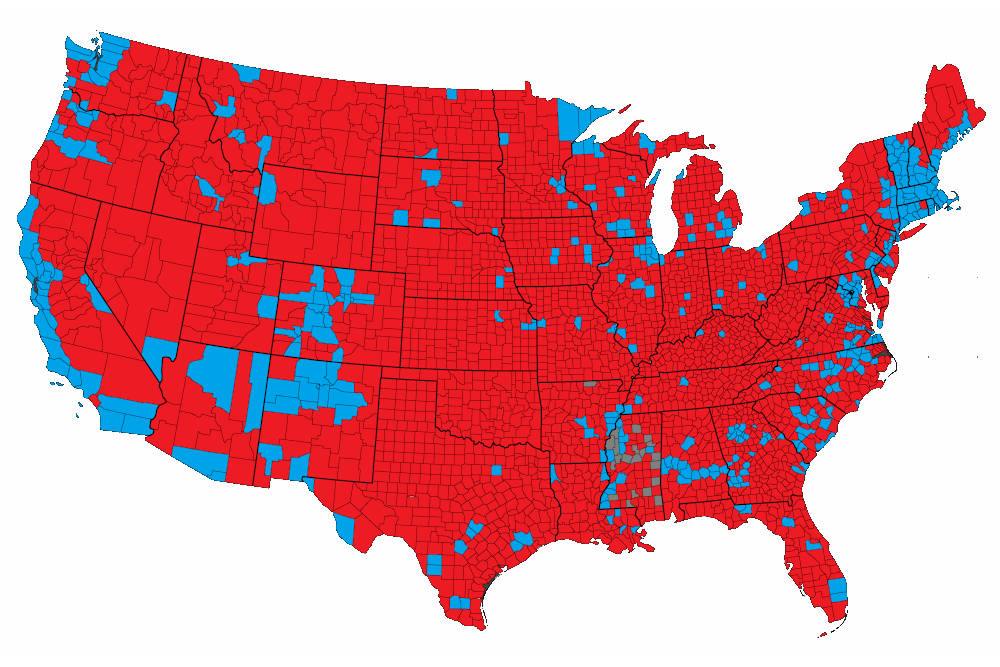
In today’s media landscape, Americans are bombarded with information from countless sources—social media, cable news, online news outlets, and podcasts. However, not all media outlets present the same narrative. Red-leaning and blue-leaning media channels often frame events, policies, and social issues in ways that reinforce their respective ideological viewpoints. This division significantly shapes public opinion, political behavior, and cultural perceptions across the country.
Panaprium ist unabhängig und wird vom Leser unterstützt. Wenn Sie über unseren Link etwas kaufen, erhalten wir möglicherweise eine Provision. Wenn Sie können, unterstützen Sie uns bitte monatlich. Die Einrichtung dauert weniger als eine Minute und Sie werden jeden Monat einen großen Beitrag leisten. Danke schön!
Understanding Red and Blue Media
Red media refers to conservative-leaning outlets that emphasize traditional values, limited government, fiscal responsibility, and skepticism of progressive policies. Examples include Fox News, The Daily Wire, and Newsmax.
Blue media represents liberal-leaning outlets that prioritize progressive policies, social justice, environmentalism, and critiques of conservative politics. Examples include MSNBC, CNN, and HuffPost.
These media ecosystems do more than report news—they shape how audiences interpret events, which stories are emphasized, and which viewpoints are amplified.
Framing and Narrative Construction
One of the most powerful tools media use to shape public opinion is framing—the way a story is presented.
-
Red media framing often focuses on personal responsibility, economic freedom, and skepticism of government programs. For example, discussions on taxation may emphasize individual burden and government inefficiency.
-
Blue media framing frequently highlights social equity, systemic issues, and collective responsibility, portraying government programs as essential for protecting vulnerable populations.
These frames influence how audiences perceive the same issue. A conservative viewer may see a new tax policy as a government overreach, while a liberal viewer may interpret it as necessary to fund social services.
Agenda Setting: What the Public Thinks Is Important
Red and blue media also affect public opinion by setting the agenda—determining which stories receive attention.
-
Red media may highlight stories about government waste, crime, or cultural issues like school curricula.
-
Blue media often emphasizes climate change, civil rights, and income inequality.
By choosing which stories to emphasize, media outlets guide what audiences perceive as urgent or important. This can influence voter priorities, public debates, and even policy discussions at local, state, and federal levels.
The Role of Selective Exposure
Many Americans engage in selective exposure, seeking media that aligns with their existing beliefs.
-
Conservative audiences may primarily consume Fox News or The Daily Wire.
-
Liberal audiences may focus on MSNBC, CNN, or progressive blogs.
This selective consumption reinforces preexisting beliefs and creates echo chambers, where audiences are rarely exposed to alternative viewpoints. Over time, these echo chambers intensify political polarization and make bipartisan dialogue more challenging.
Emotional Influence and Perception
Red and blue media often use emotional cues to shape public perception:
-
Red media may evoke fear of government overreach, economic decline, or cultural erosion.
-
Blue media may evoke empathy for marginalized groups, urgency on climate change, or outrage at perceived injustices.
These emotional appeals are highly effective. Research shows that emotionally charged stories are more memorable, more likely to be shared, and more likely to influence political opinions and voting behavior.
Case Study: Coverage of Policy Issues
Healthcare
-
Red media often frames healthcare debates around government inefficiency, high taxes, and personal responsibility. Policies like the Affordable Care Act are portrayed as burdensome and unsustainable.
-
Blue media frames the same debates around access to care, inequality, and the moral imperative to ensure healthcare for all.
Education
-
Red media emphasizes school choice, parental control over curricula, and concerns about “woke” ideologies.
-
Blue media focuses on equity, inclusivity, and funding public schools to ensure all children have access to quality education.
These contrasting narratives shape how Americans perceive education policies, even when the underlying data is similar.
Red vs. Blue Media and Political Polarization
The divergence in media narratives contributes to political polarization:
-
Audiences trust outlets that confirm their worldview, while distrusting opposing sources.
-
Social media algorithms amplify partisan content, reinforcing ideological divides.
-
Policy debates often become less about facts and more about which media narrative is believed.
Polarization affects not only national elections but also local governance, community cohesion, and civil discourse.
The Power of Local and Independent Media
While national red and blue outlets dominate, local media and independent conservative or liberal platforms also shape opinion:
-
Local red outlets often emphasize community-specific issues like local tax policies, school boards, and law enforcement accountability.
-
Local blue outlets focus on environmental regulations, public services, and social programs.
These sources influence public opinion at the grassroots level, affecting local elections, civic participation, and policy implementation.
Strategies for Consumers of Media
For Americans seeking a clearer understanding of political issues:
-
Diversify media consumption: Explore multiple perspectives, even if they challenge your worldview.
-
Verify sources: Check data, original reports, and official statements rather than relying solely on headlines.
-
Focus on policy, not rhetoric: Pay attention to outcomes and measurable effects of policies rather than emotional framing.
-
Engage locally: Attend town halls, community forums, or school board meetings to gain firsthand information.
While ideological alignment is natural, informed engagement requires awareness of how media shapes perceptions.
Conclusion
Red and blue media play a critical role in shaping public opinion in America. Through framing, agenda-setting, selective exposure, and emotional appeal, these outlets influence what citizens think, how they vote, and how they perceive societal issues. Recognizing the power of media narratives allows Americans to make informed decisions, engage in constructive debate, and approach politics with critical thinking rather than blind acceptance.
Understanding the divide is not about abandoning ideology—it’s about empowering everyday Americans to see beyond media spin and participate more effectively in democracy.
Call to Action
Be conscious of how media shapes your perceptions. Read widely, question narratives, and engage with your community. The more informed you are, the better equipped you are to uphold your values and influence public policy. Democracy thrives when citizens are critically engaged, not passively informed.
War dieser Artikel hilfreich für Sie? Bitte teilen Sie uns in den Kommentaren unten mit, was Ihnen gefallen oder nicht gefallen hat.
About the Author: Alex Assoune
Wogegen Wir Kämpfen
Weltweit-Konzerne produzieren in den ärmsten Ländern im Übermaß billige Produkte.
Fabriken mit Sweatshop-ähnlichen Bedingungen, die die Arbeiter unterbezahlt.
Medienkonglomerate, die unethische, nicht nachhaltige Produkte bewerben.
Schlechte Akteure fördern durch unbewusstes Verhalten den übermäßigen Konsum.
- - - -
Zum Glück haben wir unsere Unterstützer, darunter auch Sie.
Panaprium wird von Lesern wie Ihnen finanziert, die sich unserer Mission anschließen möchten, die Welt völlig umweltfreundlich zu gestalten.
Wenn Sie können, unterstützen Sie uns bitte monatlich. Die Einrichtung dauert weniger als eine Minute und Sie werden jeden Monat einen großen Beitrag leisten. Danke schön.































0 Kommentare